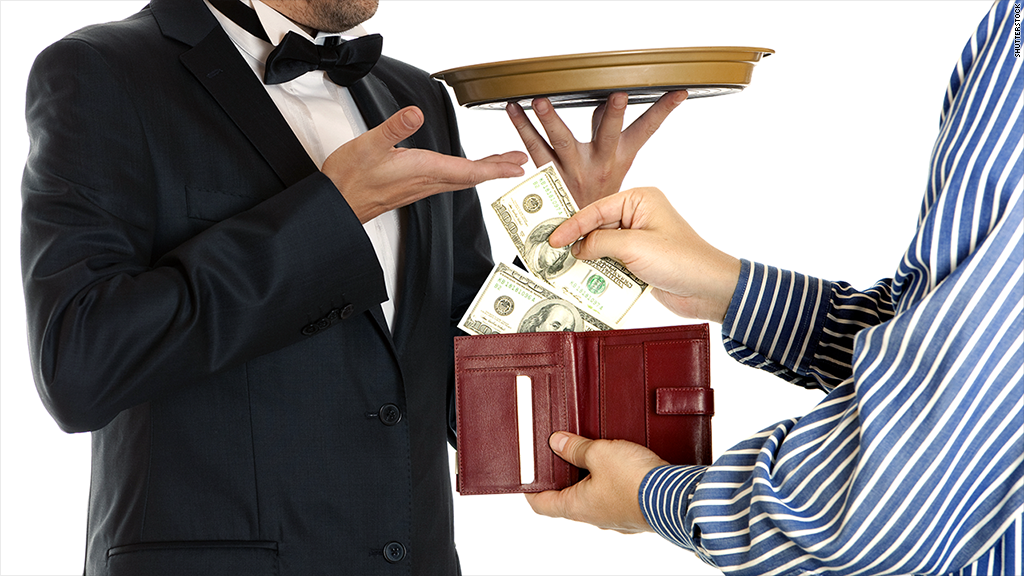
At some business dinners, the wine can make up over 50% of the total bill and that leaves the host to wonder, “how should I tip on the wine?” Should I tip less on the wine and blend the overall tip, or should I tip the Sommelier separately? This is especially true if the Sommelier did a particularly good job.
Let’s back up and look into how Sommeliers are paid. There are differences between a Floor Somm or Manager and someone running the entire wine program. Certification level makes a difference as well. A typical Certified Floor Somm will make an average of $60,000 a year, based on the 2015 Guildsomm Salary Survey. This is comprised of a daily base pay and tips. This ranges up to $147,000 for a Master Sommelier who is usually running the wine program. The base pay can range from $275 for a Certified Somm to $1000 a day for a Master Somm (it pays to study!).
The difference between the daily base salary and the total compensation is made up from tips. There are two strategies that restaurants use to pay their Somms. The first is to compensate them on the wine and alcohol sold. This makes sense as that is their primary job and due to the profitability of wine and spirits, the owner wants someone solely focused on driving sales of these profitable items. Most Michelin starred restaurants would not be profitable without their good wine programs. This can range from 5-10% of the sales, depending on the establishment, the certification level and the experience of the Somm. The commission is paid by the house. In high-end restaurants with a great wine list, this can be very lucrative.
The second approach is to have the Somm in the tip pool with the wait staff. This makes some sense as in most restaurants, the Somm is either the manager or a high-level floater to help the service. This means they are clearing plates, bussing tables and bringing new silverware – basically whatever is needed to give a great experience. In this model, the Somm will be tipped out at the end of the night and the rate can range from 1-3% of the total tip pool. For more moderate places, this is a better deal for the Somms as the food is a bigger part of the average bill.
Finally, some places blend the two approaches and provide a portion of the tip pool and a payment from the house based on wine and spirit sales. This will typically run 2% of the pool and perhaps another 3-5% of the wine sales.
So, this leaves us with the question of how to tip these specialized servers. Typical etiquette is to tip on the total amount as you normally might 15-20% for good service. No adjustment is made for the value of the wine. One way to think about this is if you brought your own bottle into the restaurant, you’d pay a corkage fee of $25-50, which is around the tip level for a nice bottle. Based on either of the approaches above, the Somm should be taken care of by either the tip pool or a payment from the house for the wine sold.
Sometimes, when you get a little crazy with the wine, ordering ancient Bordeaux or magnums of cult California Cabs and ring up a huge wine bill, you can back down the overall tip amount to the 10-15% range. The Somm will also appreciate the chance to taste some of your wine if it is special and spectacular and that will suffice as an incremental tip.
When the Somm did a very nice job for a normal mealn, you can find them after the meal and give them a cash tip on top of the tip for the bill. A tip or $20-50 is well appreciated and more than the money is recognition for a nice job. Believe me, the next time you come to that place – the Somm will remember you and made great effort to ensure you have a wonderful time.
Cheers!

